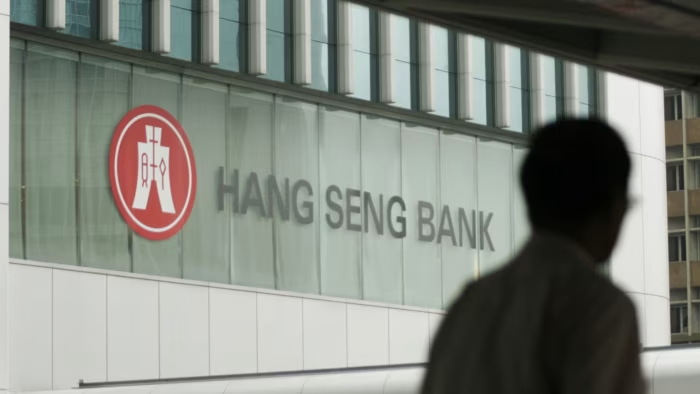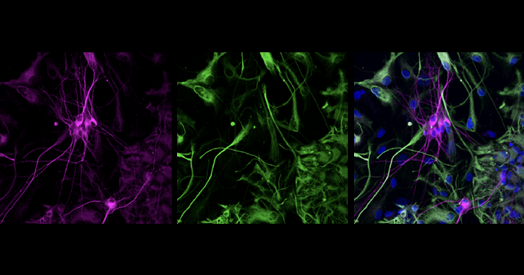Halfdays, a women’s skiwear brand, announced on Thursday that it raised a $10 million Series A funding round led by apparel manufacturer Kellwood Company with participation from Dick’s Sporting Goods Ventures and the model Taylor Hill.
Blog
-
EXPEDIA GROUP B2B SUPERCHARGES PARTNER GROWTH WITH NEW AI-POWERED TRIP PLANNER AND MULTIPLE APIS – Business Wire
- EXPEDIA GROUP B2B SUPERCHARGES PARTNER GROWTH WITH NEW AI-POWERED TRIP PLANNER AND MULTIPLE APIS Business Wire
- Perplexity Throws Open the Doors to Its Comet AI Browser, Now Free for Everyone TechRepublic
- Expedia partners with OpenAI for Access…
Continue Reading
-

Researchers quantify forced labor risk in five dietary patterns
Many Americans choose food based on cost and nutrition, but personal values, such as animal welfare and environmental concerns, also shape what ends up on our plates.
Now, researchers at the Gerald J. and Dorothy R. Friedman…
Continue Reading
-

Guan Xiao: Teenager / Sophie von Hellermann: Get Your Head Around It – Announcements
Guan Xiao: Teenager
Kunsthalle Wien presents the first solo exhibition in Austria by Guan Xiao. Comprising an entirely new body of sculpture and painting, it takes what Guan Xiao describes as an “ambiguous life stage“ as a starting point for…Continue Reading
-

Prior incarceration linked to poor health in older adults
A recent analysis reveals that older adults with prior incarceration report worse physical and mental health than their peers, even if they were incarcerated in the distant past. The findings are published in the Journal of the…
Continue Reading
-

HSBC offers $13.6bn for 100% control of Hong Kong lender Hang Seng
Unlock the Editor’s Digest for free
Roula Khalaf, Editor of the FT, selects her favourite stories in this weekly newsletter.
HSBC has made a HK$106bn ($13.6bn) offer to buy out minority investors in Hong Kong lender Hang Seng Bank as it presses ahead with a restructuring plan.
Europe’s largest bank has offered HK$155 a share, a 30 per cent premium over Hang Seng’s closing price on Wednesday, to take the unit fully private and delist its Hong Kong-listed shares. The all-cash deal values Hang Seng at HK$290bn.
HSBC’s share price was down as much as 7.3 per cent by mid-morning in Hong Kong after it said it would not make share buybacks for the next three financial quarters in order to generate the cash needed for the deal.
The bank returned $11bn to shareholders in 2024 through share buybacks alone.
HSBC took control of Hang Seng during a banking crisis in 1965 and owns about 63 per cent. It ranks among the global bank’s most significant acquisitions alongside the UK’s Midland Bank in 1992.
Hang Seng has been hard hit by Hong Kong’s recent property slump, with its non-performing loan ratio at 6.7 per cent at the end of June — an all-time high.
HSBC had already kicked off a restructuring at Hang Seng, bringing in a new chief executive in October.
“This investment is primarily to enhance the capabilities of Hang Seng in terms of additional products and additional scale and technology investments, as well as obviously giving customers the same access to our international network,” said group chief executive Georges Elhedery.
Elhedery took on the role of chief executive last year and kicked off a worldwide restructuring that included shutting HSBC’s investment bank in the US and Europe and pulling out of some markets.
He denied that the move to tighten HSBC’s grip on Hang Seng was sparked by concerns over its commercial real estate exposure.
“We remain constructive on the outlook for the [Hong Kong real estate] sector in the medium to long term. So we see this as a short-term credit cycle,” he said.
HSBC considers Hong Kong a “home” market along with the UK. The global bank has been under pressure amid greater tension between China and the west, with its largest shareholder Ping An launching a campaign in 2022 for it to split up its Asian and western businesses.
In an internal email to staff Elhedery added that he expected “an opportunity to create greater alignment across HSBC and Hang Seng Bank that may result in better operational leverage and efficiencies”.
Some analysts greeted the move positively as a simplification measure for HSBC. “Either Hang Seng Bank should be separate and a competitor or it should be fully owned, so this move makes sense,” said Michael Makdad of Morningstar.
Hang Seng has traditionally operated as a more retail, mass market franchise while HSBC targeted wealthier clients and businesses.
Hang Seng recorded net income of HK$6.9bn in the first half of 2025, compared with HK$10bn in the same period the previous year.
In a call with journalists Elhedery added that there might be “opportunities for alignment between the two entities”, including offering Hang Seng customers more access to HSBC’s international network.
Continue Reading
-
Chinese Surgeons Perform First Pig-to-Human Liver Transplant – The New York Times
- Chinese Surgeons Perform First Pig-to-Human Liver Transplant The New York Times
- A man in China lived more than 170 days after transplant with pig liver, doctors report CNN
- Pig’s liver transplanted to human in world first Yahoo News UK
- Pig liver…
Continue Reading
-

Central banks need to learn lessons about supply shocks
Stay informed with free updates
Simply sign up to the Central banks myFT Digest — delivered directly to your inbox.
The writer is an external member of the Bank of England’s Monetary Policy Committee
Generations of economists — myself included — were taught to think about changes in economic activity primarily in terms of demand. But supply can prove every bit as consequential for output and inflation, as we recently experienced in the face of a pandemic and a war in Europe. We’ve learnt a number of lessons about how negative supply shocks propagate through the economy and how central banks might respond to them.
The conventional wisdom is that monetary policymakers should look through adverse supply shocks. First, they are often transitory and there is a lag before monetary policy has an impact on the economy, so any response would probably come to bear too late. Second, adverse supply shocks tend to push output down and inflation up. Monetary policymakers generally respond more cautiously to these shocks as they weigh the benefits of stabilising prices with the costs of weakening output. Third, if inflation expectations are well anchored, second-round effects should be avoided. Finally, interest rates are a demand-management tool, with little direct impact on supply.
In the face of recent supply shocks, inflation peaked at 9.1 per cent in the US, 11.1 per cent in the UK and 10.6 per cent in the Eurozone. More than five years after the onset of the pandemic, it remains above target in the US and UK.
The past few years have taught us a lot about the nature and transmission of supply shocks. First, different supply shocks can propagate through the economy in different ways. Recent research by Bank of England staff suggests a fall in productivity growth and a wage mark-up both result in a sharp initial jump in core inflation, but a negative labour supply shock results in a much more persistent rise.
The extent to which supply shocks have a lasting impact depends in part on whether second-round effects take hold, which act mainly through inflation expectations. The level of inflation influences how expectations form. Bank research shows households’ and companies’ attentiveness to inflation is greater when it reaches 3-4 per cent in the UK.
In projecting their own price growth over the next year, companies are more influenced by inflation changes when inflation is high than when it is lower, as it was before the pandemic. Household and company expectations are more sensitive to rising than falling inflation as well. Finally, expectations are particularly responsive to price changes in items such as food and energy.
The state of the economy matters when gauging whether elevated inflation expectations will feed into higher wages and prices. We saw this after the pandemic, when the inflationary impact of energy price and supply chain shocks was perpetuated by a tight labour market, boosting wage growth and services inflation. According to the bank’s Decision Makers Panel, many companies also set prices according to the state of the economy rather than on a schedule, and they changed their prices more frequently when inflation was high in 2022.
These lessons can help central banks respond to supply shocks both now and in the future. Last August, the Monetary Policy Committee considered a hypothetical scenario in which inflation expectations were more backward-looking and productivity growth was weaker than in our baseline forecast. This results in higher and more persistent inflation, barring a monetary policy response.
Bank staff then applied a policy rule that minimises deviations of inflation from target and output from potential, and prescribes a policy path to achieve this. The rule’s path is more restrictive than both the market curve underpinning our baseline forecast and the more recent, higher market curve — in fact it suggests a near-term rate rise.
This prescribed path is not gospel. Policy reversals undermine central bank credibility, and restrictiveness could also be achieved by skipping rate cuts.
Uncertainty around the structural features of an economy may affect the appropriate policy response as well. Bank research finds that if policymakers are uncertain about the persistence of inflation — as they are likely to be in the case of a supply shock — policy should respond more forcefully to inflation than under conditions of certainty.
Learning the lessons from recent supply shocks is not just an academic exercise. Transformational issues such as climate change, economic fragmentation and economic statecraft mean supply shocks are likely to become more frequent and successive.
Central banks need to understand how these shocks might impact the economy and how our policy stance might best evolve accordingly.
Continue Reading
-

Europeans risk cold showers in EU red tape snafu
Unlock the Editor’s Digest for free
Roula Khalaf, Editor of the FT, selects her favourite stories in this weekly newsletter.
Europeans are at risk of cold showers after materials critical to hot water tanks were not included on an EU list of authorised substances, which was revised as part of the bloc’s sprawling environmental legislation.
Applia, the home appliance lobby group, has estimated that more than 90 per cent of hot water storage tanks would no longer be marketable in the EU if hafnium, a highly heat resistant metal, and its sister element zirconium are not recognised as safe for household use.
The two elements were not listed in the bloc’s rules for drinking water, which enter into force in 2027 and aim to protect consumers and improve water quality standards. The European Commission appears to have overlooked the fact that hot water tanks also hold potable water, with manufacturers warning they risk fines if they do not comply with the list of authorised substances.
“[Hafnium] is absolutely safe to use,” said Paolo Falcioni, director-general of Applia, stressing that the element had been used for more than 100 years in enamelled hot water tanks. If hafnium or zirconium are not mixed with the enamel, he explained, the glazing “cracks and the hot water is not hot”.
The two elements are also used in enamelling heat pumps, which have become more popular in recent years as households move away from gas boilers.
Falcioni said alternatives to hafnium, such as steel or copper, cost four to five times as much, which would be transferred to consumers at a time when household finances are tight.
“The impact would be huge,” said Jérôme Martel, regulatory affairs manager at the French heating and ventilation company Groupe Atlantic. Italy’s Ariston, another major manufacturer of hot water tanks, raised similar concerns.
European companies have pushed the commission to simplify the bloc’s regulatory burden, arguing it only adds to their woes ranging from high energy prices to US tariffs and cheap Chinese competition. Falcioni warned, however, that the complexity of the existing rule book also meant that more oversights, such as the exclusion of hafnium, were likely unless the commission paid greater attention to industry concerns.
The commission said it was up to member states to notify it of the need to authorise hafnium and so far none had done so. Brussels previously told companies they can apply for toxicological assessments to get them approved.
But industry argues this process would take too long and they would be forced to make costly changes to their production lines in the interim.
“This would place European manufacturers at a severe disadvantage compared to non-EU competitors,” said an industry executive, who asked not to be named.
Member states can approve hafnium’s use on a national level but this option is also costlier and more time-consuming than EU authorisation.
Falcioni warned the lack of regulatory clarity in this area risked deterring foreign investors, too.
“There are companies that are willing to reshore the manufacturing to Europe but without this certainty they may not,” he said.
Continue Reading
-

Boosting SCN2A expression reduces seizures in mice
By compensating for a missing copy of SCN2A, one of the genes most strongly linked to autism, a variant of the gene-editing technology CRISPR can reduce susceptibility to seizures, according to a new study in mice.
SCN2A…
Continue Reading
